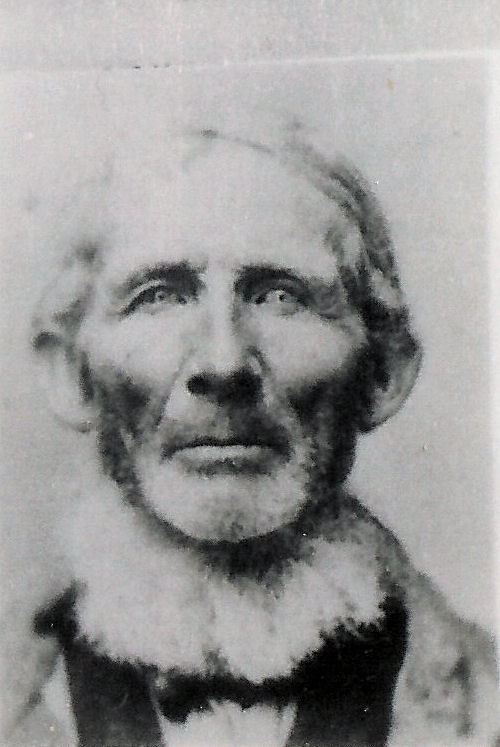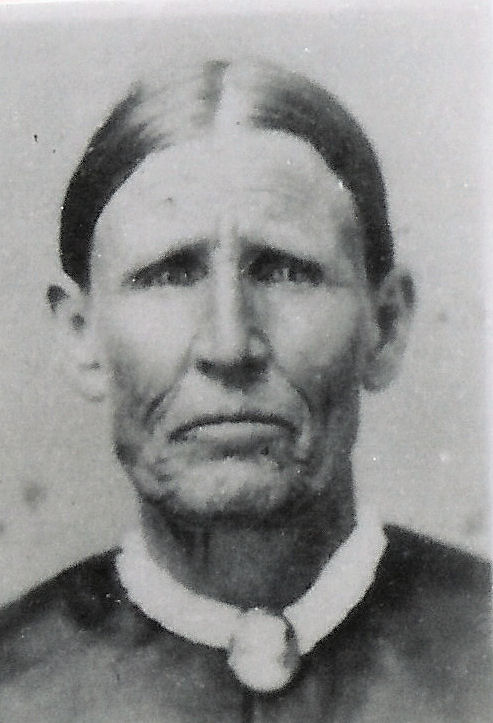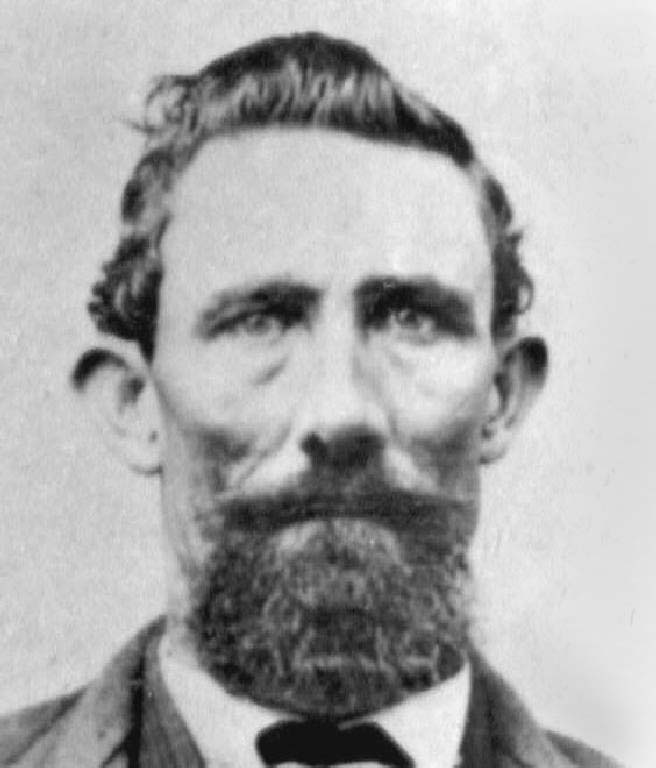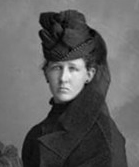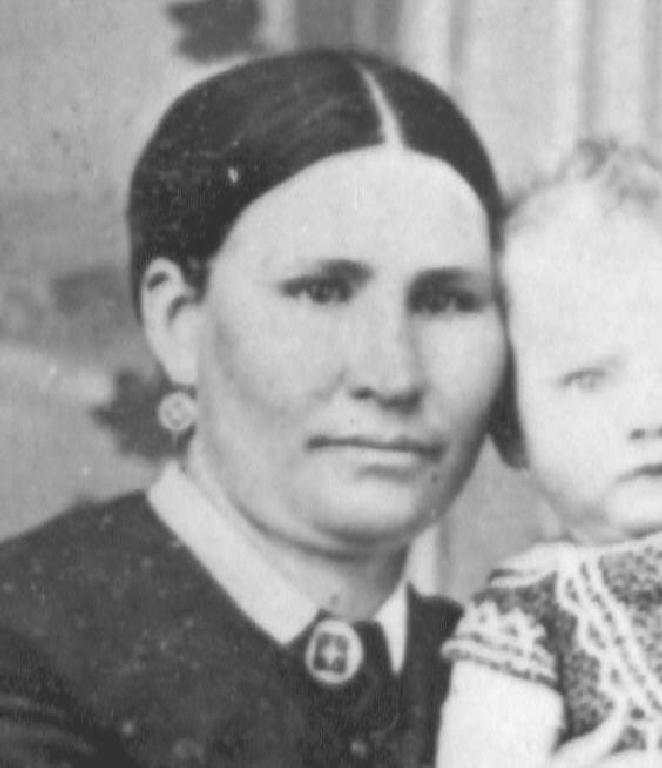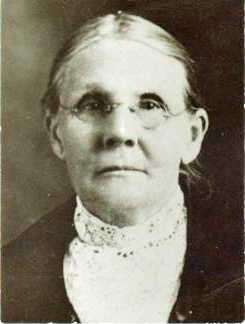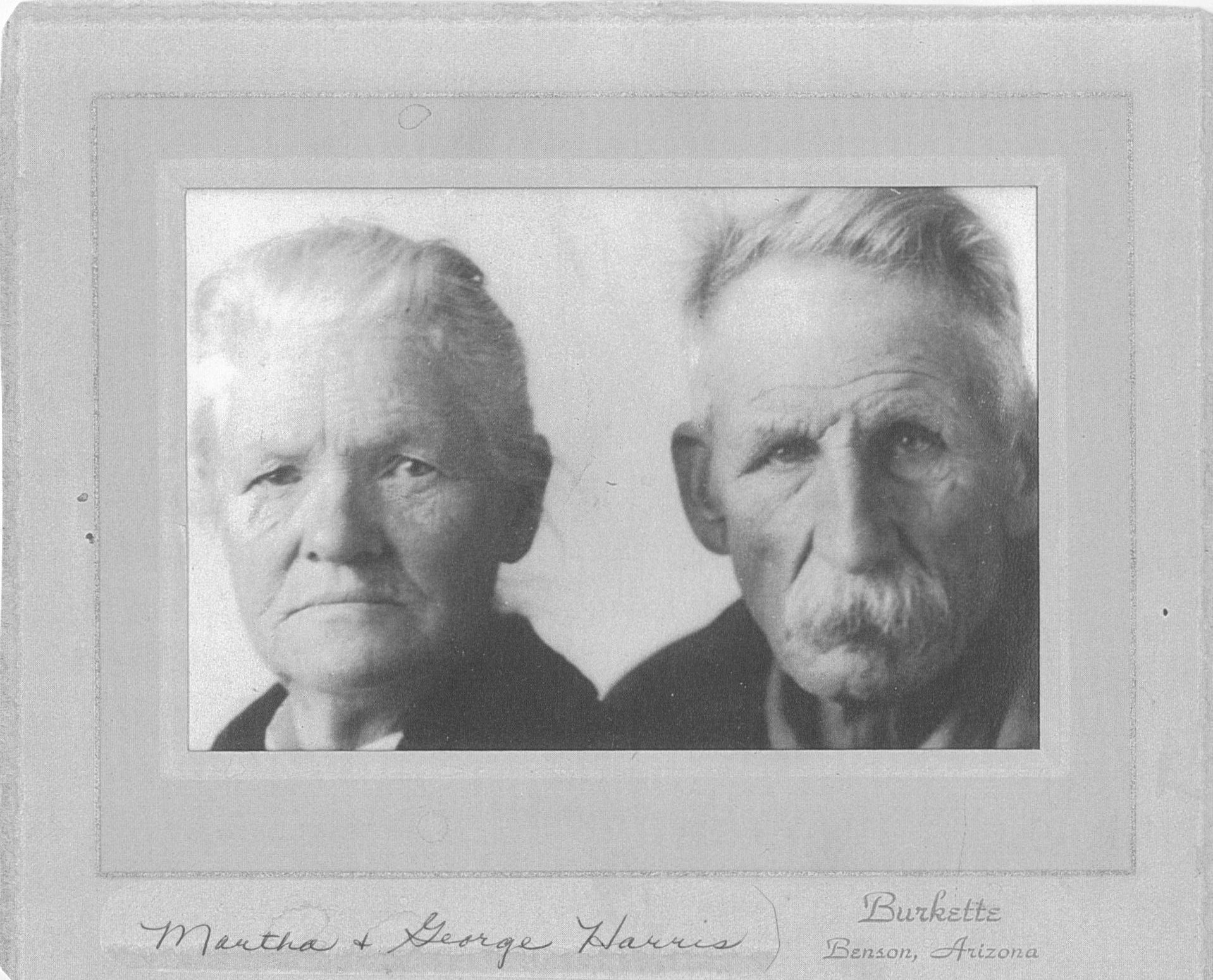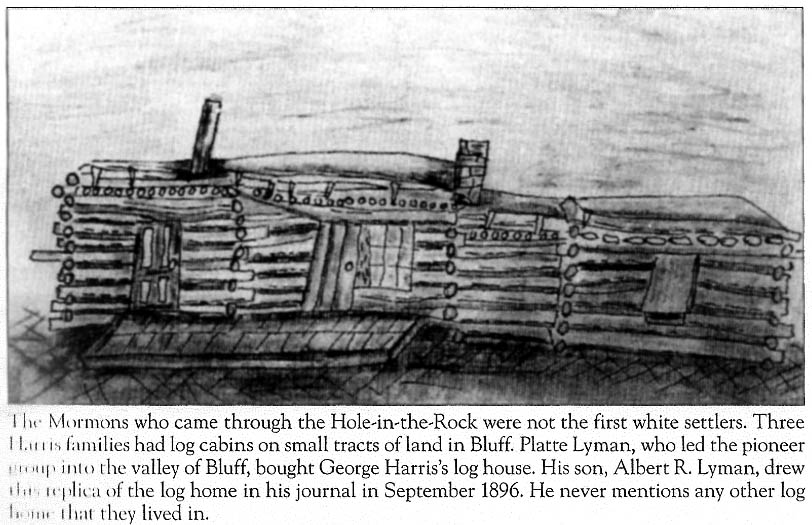History of John and Lovina Harris
John Harris
born: 2 December 1808 at Green, Northumberland, Pennsylvania, United States
married: 5 January 1831 at St. Joseph, Indiana, United States
died: 4 May 1899 at Tucson, Pima, Arizona, United States
Lovina Eiler
born: 17 December 1807 at Dayton, Montgomery, Ohio, United States
died: 7 September 1886 at Central, Graham, Arizona, United States
Children:
Daniel (1831-1892): married Lydia Harris 1853 at San Bernardino (div); Rachael Thorton 1873 at Salt Lake City; Hannah Thornton 1874 at Salt Lake City
Lucinda (1832-1905): married Abner Levi Blackburn 1852 at San Bernardino, San Bernardino, California, United States
Angeline (1834-1893): married William Hyde 1852 at San Bernardino, San Bernardino, California
Jacob (1837-1920): married Eliza Jane Carpenter 1863 at Fillmore, Millard, Utah, United States
Suzannah (1840-1917): married Clark Cyrenous Fabun at San Bernardino
Rebecca (1842-1927): married William R. S. Warren 1858 at Salt Lake City,Salt Lake,Utah
Joseph (1844-1846)
Oliver (1847-1919): married Lodemia Sky 1869 at Salt Lake City,Salt Lake,Utah
George (1850-1926): married Martha Ann Thornton 1875 in Utah?
Joseph H. (1852-1926): married ? 1869 at Salt Lake City,Salt Lake,Utah
THE STORY OF THE JOHN HARRIS FAMILY
In 1847, John Harris and his family decided to leave their home in Indiana and move to
Oregon, as that seemed to be the spirit of the times, so they started out; Grandfather
(John Harris), Grandmother (Lovina Eiler), and their five living children (Daniel [1831],
Lucinda [1832], Angeline [1834], Jacob [1837], Susanna [1840], and Rebecca [1842]; all
went well until they arrived in Council Bluffs, Iowa. There John Harris took desperately
ill. For three days Grandmother was beside herself, but could do nothing to relieve his
suffering. A company of Mormon pioneers were spending a few days camped near by. Brother
Joseph Knight was among these, and his wagon wheel had broken down and he was trying to
fix it, so as to continue with the saints.
But, he felt prompted that all was not well in the strangers camp, near by — not that he
had been approached for help — but was prompted. He told his wife of his feeling, and she
scolded him as wives will and said if he didn’t get busy with the wheel they would never
be ready to go with the company. So he went back to work, but three times this prompting
came to him, and finally he could stand it no longer.
He picked up another brother and they approached the Harris camp.
He told Grandmother (Lovina) of his feeling [and] asked if there was anything he could do
to help or if anything was wrong. She told him of her husband’s severe suffering. He asked
if she would like them to administer to him, and she didn't know what that meant but was
glad of any assistance.
They administered to him and he was instantly healed. Being a wheel wright by trade, he
arose from his bed; went with Brother Knight and fixed his wheel for him.
Then the Harris family were so overwhelmed with the teachings and kindness of the Mormons
that they decided to cast lots with them and went to Utah instead of to Oregon. They were
in Brigham Young's second company.
Rebecca (later married John R.S. Warren) said that hardships overtook them on the way
and the team of horses died that was carrying the church records. When Grandfather (
John Harris) heard of this, he went to Brigham Young. When Brigham Young saw him coming,
he said, "Well, Brother Harris, what is your trouble? Seems like that is all we have.
So what is your complaint?”
Grandfather told him he had heard that the horses had died, and as he had some extra ones,
he had come to offer them. To which Brigham Young replied, "Well, that is more like it,"
and gladly accepted. So the team that brought the records across the final stage of the
journey belonged to Grandfather Harris.
The Harris family settled in Farmington, Davis County, Utah, where they were living when
John Harris was called to join in settling San Bernardino, California. They responded to
the call, leaving March 11, 1851. They joined others in Utah Valley and got underway March
24. [Harris journal of the San
Bernardino expedition] The expedition was filled with trials as there was little water or
feed for the animals. Their travel was with the Charles C. Rich company. They reached Cajon
Pass (the crossing into ‘valley in open daylight of California’) on June 9, being joined
by other companies, and awaiting Captain Jefferson Hunt, who had made a previous arrangement
to purchase the Rancho del Chino. Hunt reached the camp with news of failed negotiations.
However, negotiations began for a neighboring rancho, Rancho San Bernardino, which
succeeded and were completed in September 1851.
During the delay, John Harris went back six days into the Mojave desert to retrieve his
wagon of wheelwright tools, finding all the tools but his lathe destroyed. He returned to
the Cajon Canyon camp on July 26. He spent August traveling multiple times to the coast
for “a load of goods.” Finally, on October 28, they were able to begin building a home in
the new city of San Bernardino. They moved “into a house without a flore, dors or windas”
on December 5. The Harris family assisted with the public works projects of building a
fortification, fences, a school/meeting house, and making roads. They sowed their grain,
and were amazed at the speed with which the crop grew.
On April 28, 1852, daughter, Lucinda married Abner Levi Blackburn, a member of the
Mormon Battalion. She and Abner would remain in San Bernardino the remainder of their
lives.
In 1855, John was called on a mission to the gold country of Northern California,
traveling “from San Bernardino west through Los Angeles and to the Pacific Ocean where
he traveled up the coast to Santa Barbara and then turned inland to San Luis Obispo and
Salinas and generally followed what was El Camino Real in the Spanish days and is now US
Highway 101. At about what is now the city of Gilroy, John described crossing a range of
hills at Pacheco Pass to enter the Central Valley of California. He then traveled
northward generally on the eastern side of San Joaquin Valley until arriving August 15,
1855 at Salmon Falls, a mining town on the American River some twenty miles east of
Sacramento. Since leaving San Bernardino some 36 days earlier, John Harris had traveled about 500 miles.
“John does not list others who traveled with him, but with four wagons and some horses and
mules, perhaps ten or more were in the party. He does include a few names of fellow
travelers or people that he met along the way like a Brother Holladay of Santaquin, Utah
and a Brother Matthews, or people that the party stayed with such as a Brother Dotson, two
Brother Thomases and a Brother Moss. A fellow traveler was Brother Grundy and perhaps Daniel Clark.
“A day or so before John Harris arrived at Salmon Falls; he was met by his son Daniel
Harris, who apparently had left San Bernardino earlier to come to the mining camps. Later,
near Salmon Falls, he met his brother William Harris and his wife Phoebe who at the time
was very ill. William had apparently come to the gold fields from Indiana in 1849. When
John arrived in 1855, William was involved in a mining operation along the North Fork of
the American River some twenty miles above Salmon Falls at a place called Murderer’s Bar.
William, with his wife Phoebe and children Adelia 9, Elizabeth 6 and Josephine 3 lived in the nearby town of Greenwood.
“Shortly after arriving in northern California, John Harris records in his journal
associating with another John Harris, sometimes recorded as John S. Harris (John Smith
Harris was Daniel’s brother in law). Early in John’s mission, he with John S. Harris
attempted to arrange to preach the gospel in local halls, but did not meet with much
success. John therefore often lived with his brother at Greenwood, but also stayed at
various towns such as Kelsey, Placerville, Diamond Springs, Pleasant Valley, Mud Springs
and Coloma where he often worked for the Wimmer family.
John associated mainly with his brother William Harris and his son Daniel Harris and J
ohn S. Harris until the first week in October, 1855 when William, Daniel and John S.
left the mining camps and returned to San Bernardino. Prior to going north Daniel was
married to Lydia Harris, daughter of Moses and Fanny Smith Harris, by Amasa Lyman. He
now rejoined his wife and young son, Daniel Duane (1854). A year later (1856) a daughter
Francis Lovina was born. John and Lovina now had four married children and nine grandchildren,
a profitable farm, and considerable herd of cattle and horses. The mission to northern
California had been to help raise funds to pay the indebtedness the colony owed on Rancho
San Bernardino. Now two crises merged: the fundraising was insufficient, and Brigham Young
called all outlying colonists back to Utah as Johnson’s Army prepared to invade.
Attempts to sell homes, farms and herds flooded the market and prices plummeted. Three
married daughters remained in San Bernardino and the Harris family simply had to leave
much of their stock behind. Daniel and Lydia left the Utah-bound group at Washington
(near St. George) as did Lydia’s parents; John and the others kept traveling north to
Fillmore. With the exception of total disruption, the Army’s arrival did not have much
impact on the family. (Brother William returned to northern California.) The rest of the
children soon marry after settling in Fillmore. Daniel and family now also moved here.
In 1861, Daniel and his brother Jacob, and others of the San Bernardino exiles decided to
again cross the desert and reclaim some of the stock they had left behind. After gathering
some of the horses, they set off across the desert toward Utah. To their misfortune, the
new sheriff at San Bernardino also set off in hot pursuit. Daniel was arrested and convicted,
and by November was escorted to San Quentin to serve a four-year term. Jacob was found not
guilty. Lydia divorced Daniel and returned to her parents’ home, who were now in
Harrisburg. When Daniel was released, he rejoined his parents who were now at Chicken
Creek (Levan) where he was baptized in 1867. Daniel then married two sisters Rachael
(1873) and Hannah Thornton (1874).
Angeline Harris had married William Hyde while in San Bernardino. They ended their exodus
at Minersville, Beaver County. William took a second wife, Mary Ann Green, in 1858, and
establishes her family in Weber County. He eventually moves Angeline and her family to Salt Lake City.
Rebecca Harris also married into polygamy, becoming the third wife of William Reed
Stockbridge Warren in 1858, and settled in Parowan, where she had three children.
William and his first wife, had joined the San Bernardino camp in 1855, during a pause
in their emigration to Utah through California. It is likely she met him there or on the
exodus journey to Utah. William died about 1878-79, and Rebecca moved her children to join
the extended John Harris clan again, who were now in the vicinity of Durango, Colorado.
John learned of the anticipated Mormon settlement of the San Juan River during 1879. It
is possible he gained this knowledge from the Davis or Harriman families, or someone
associated with them, as Durango was the nearest market town to their new settlement at
Montezuma Fort. Or, he may have learned this from his daughter and son-in-law, Angeline
and William Hyde, since they intended to establish a trading post in the new San Juan
settlement. Either way, John determined he would be at the San Juan to meet the expedition
when it arrived. He therefore moved to the junction of Cottonwood Wash and the San Juan
during the summer of 1879 and built a cabin for his extended family of fifteen, which now
included his wife Lovina, Daniel and his wife, Hannah Thornton, with three children,
George and his wife, Martha Thornton, with two children, and Rebeca Warren with her three children.
The San Juan Expedition gathered at Escalante in late October 1879, with an anticipated
journey of six weeks to their new homes. “Perhaps by Christmas” the parties hoped on both
ends of the trail. Of course, Christmas came finding those on the west still carving the
road through the Hole-in-the-Rock and growing increasingly short on supplies. On the
eastern end, the Harris family had self-imposed rations limiting their meals to two per day.
On December 17 four men were sent from the ‘Hole’ to scout a potential wagon road beyond
the Colorado to the San Juan. They departed with a eight-day food supply, which they
exhausted by Christmas. Three days more they trudged toward San Juan climbing Comb Ridge
at Navajo Spring and descending finally into Cottonwood Wash famished and completely
worn-out (December 28). George Hobbs, one of these scouts, had been in the area a year
earlier, and could not have anticipated what they found — a cabin belonging to white
settlers and a woman preparing a meal. Rebecca Warren was taking her turn preparing dinner
for the Harris family, which the Harrises offered to the famished scouts. It is not known
what the Harris family members had for that supper, as the scouts consumed the entire meal
prepared for the family. With another day ahead of them, the scouts were offered a more
limited breakfast before continuing to their destination at Montezuma Fort, hoping to
find George’s sister, Elizabeth Harriman and her family, along with the James Davis family.
On December 31 the scouts returned to the Harris camp with a fifth man, Harvey Dunton,
who had been with the Harrimans and Davises. They had negotiated the purchase of 48 pounds
of flour, leaving most for the two starving families at Montezuma, and were now on their
way back to the main San Juan party. Daniel now joined the return group hoping to acquire
supplies for his father’s family. Daniel would then become part of the larger group and
help them reach the San Juan, although both he and George Hobbs reached their respective
families several days ahead of the arrival of the main body of pioneers.
By summer of 1880 the Harris family had dispersed from the San Juan — John, stating there
was nothing to hold him in the San Juan, had returned to La Plata County, Colorado, as did
Daniel and Rebecca. George sold the cabin to Platte D. Lyman and moved back to New Mexico.
Angeline, did not reach the San Juan until the fall of 1881, and settled at Montezuma. Her
daughter married Amasa Barton, and she joined them at the Hyde, now Barton, trading post
known as Rincon. She never rejoined her husband, who after the flood of 1884 moved his
second family to Colorado. Angeline died in 1893 at Nephi; Daniel followed his father into
the Tucson area, and into Mexico where he died in 1892; John lived until 1899 and died in
Tucson; George also moved to Tucson where he died in 1926. Jacob died in Bloomfield, New
Mexico, in 1920, and Oliver went to San Diego, California, where he died in 1919. The
sisters who remained back in San Bernardino died there, Susanna in 1917 and Lucinda in 1905.
Sources:
Miller, Hole-in-the-Rock
FamilySearch stories of John Harris, Rebecca Harris Warren, Daniel Harris
Goorian, Philip, Green Valley, Arizona, chapter 7
Hole in the Rock Remembered
